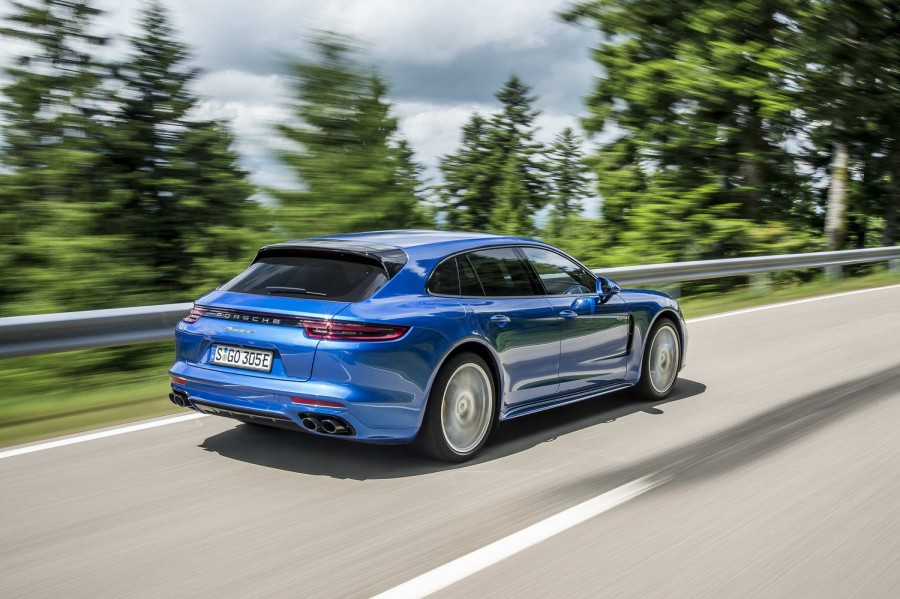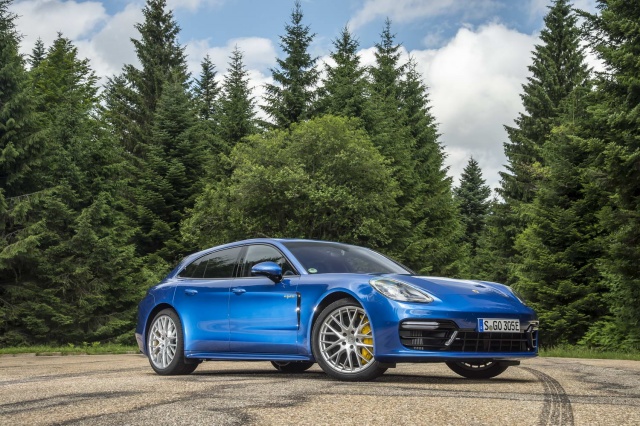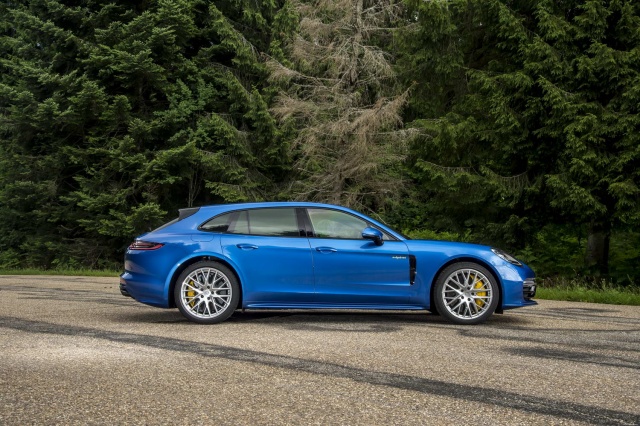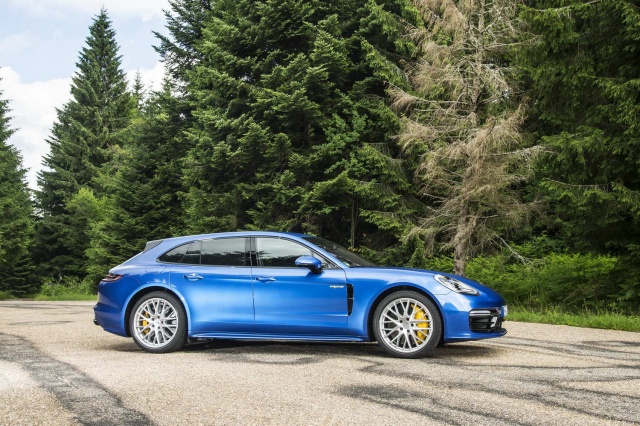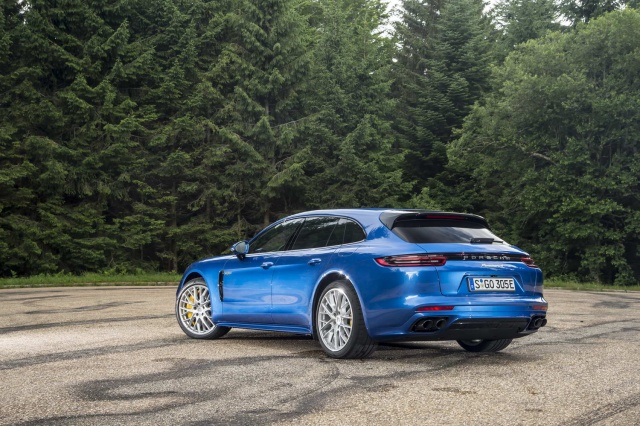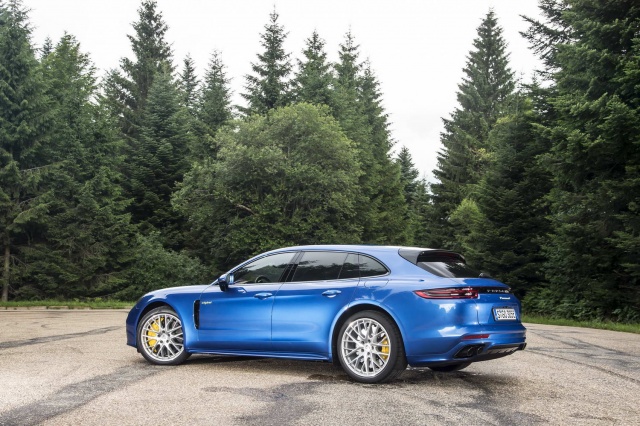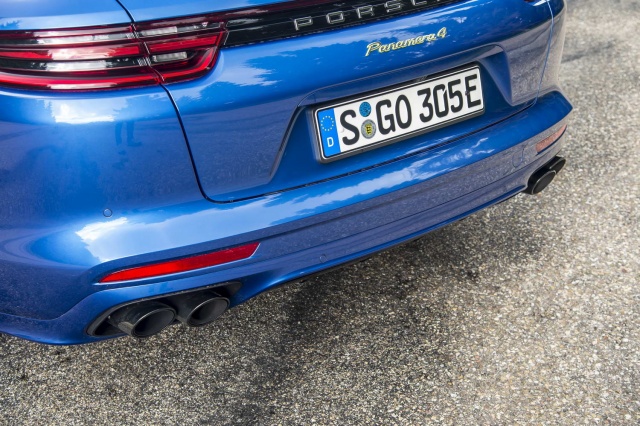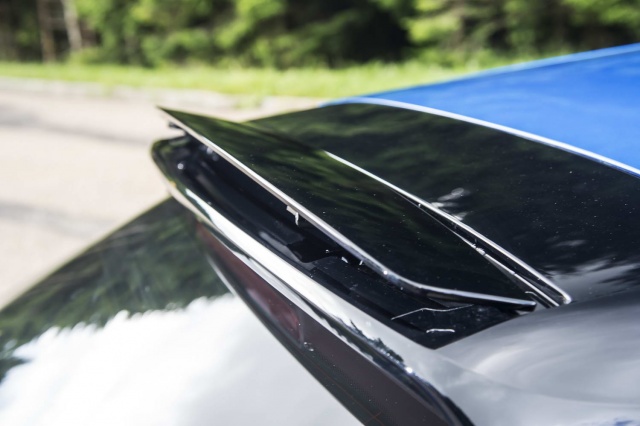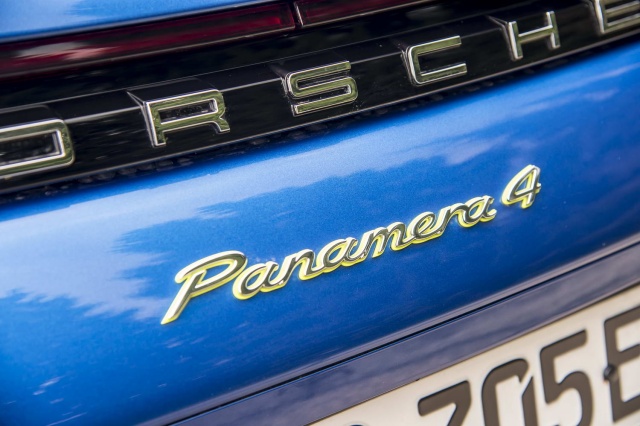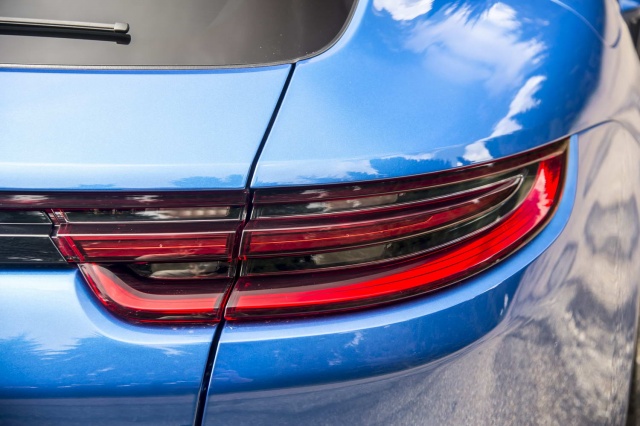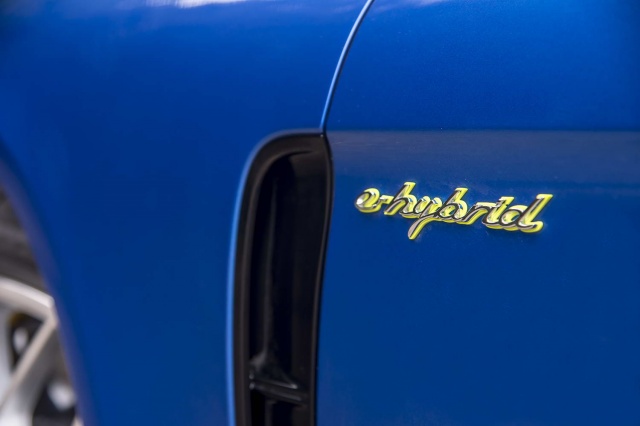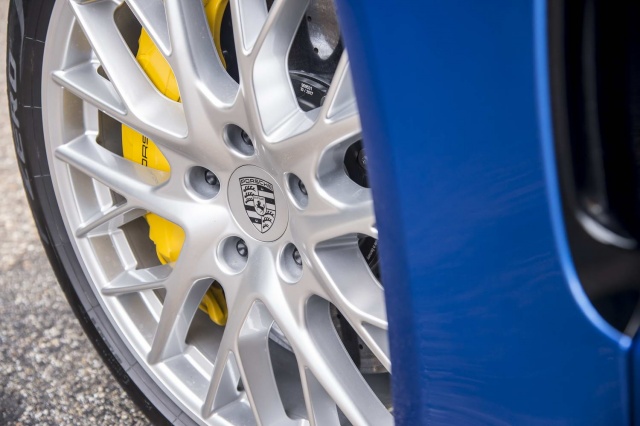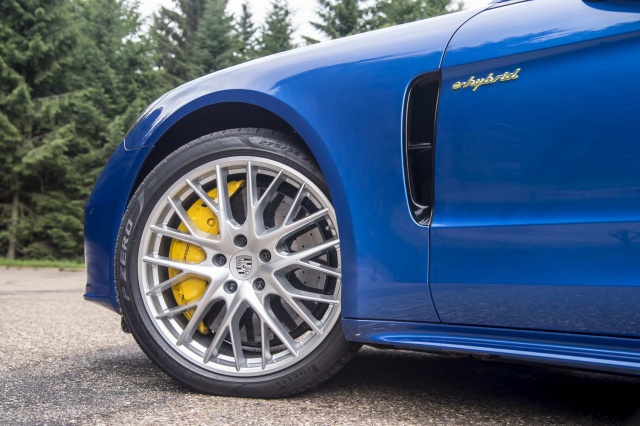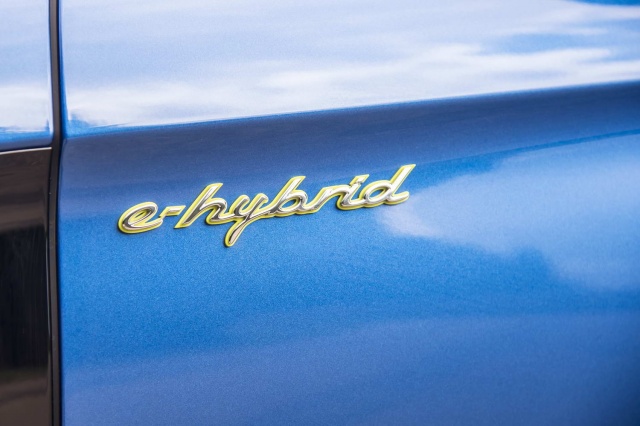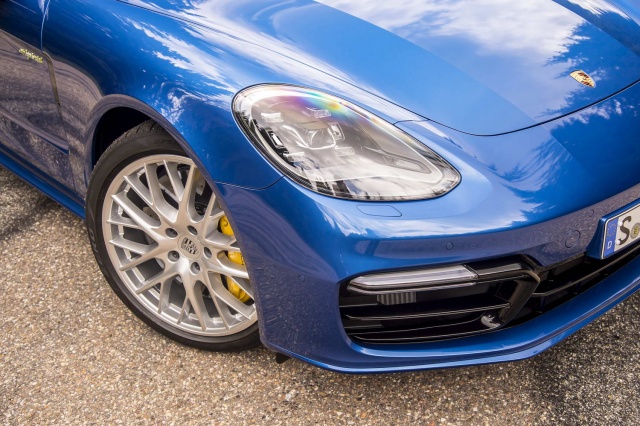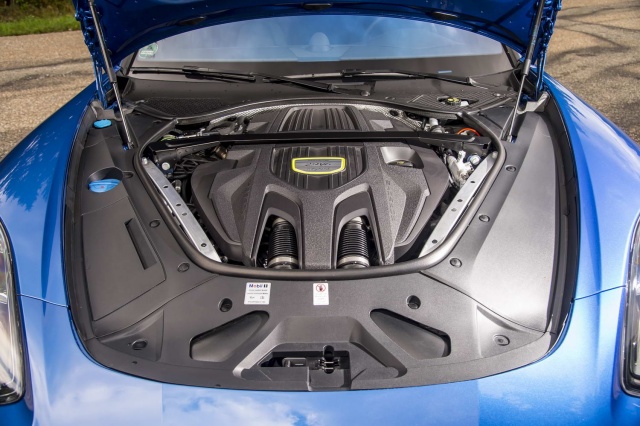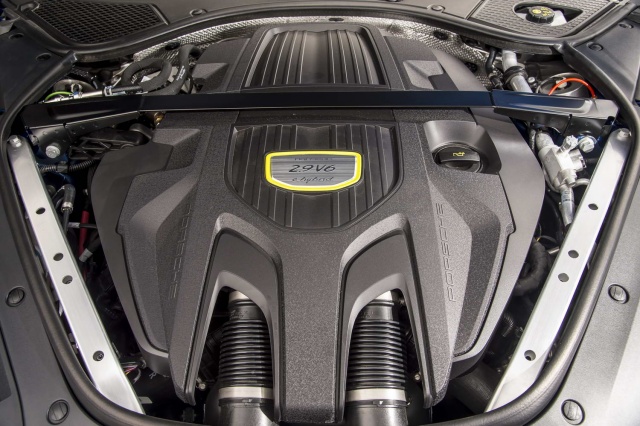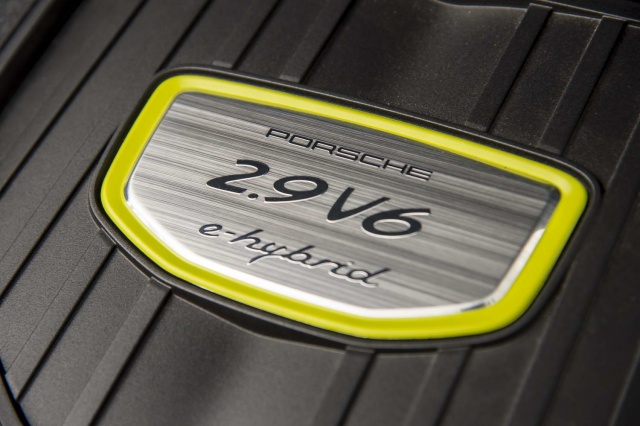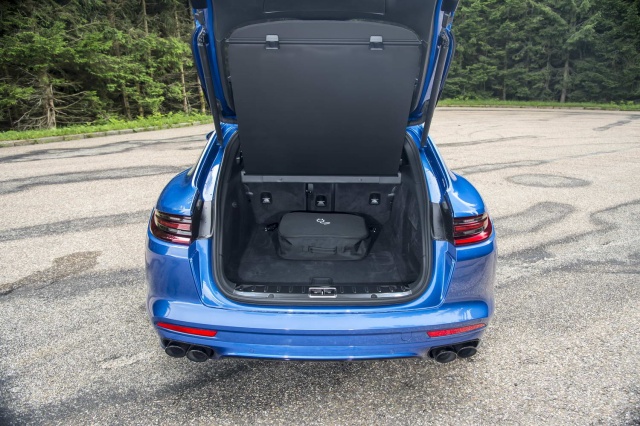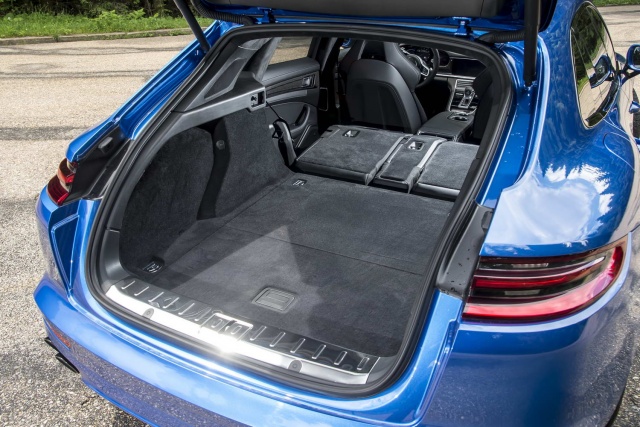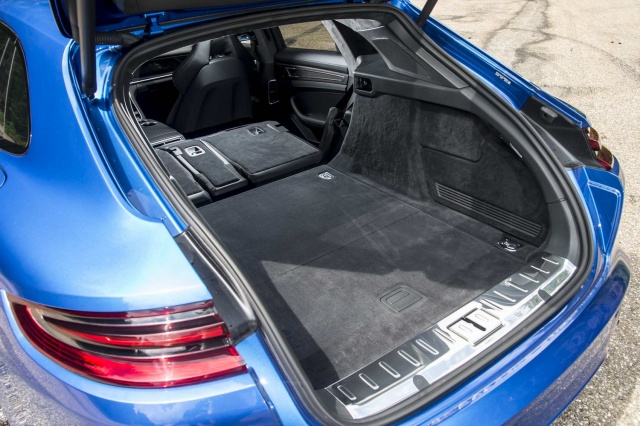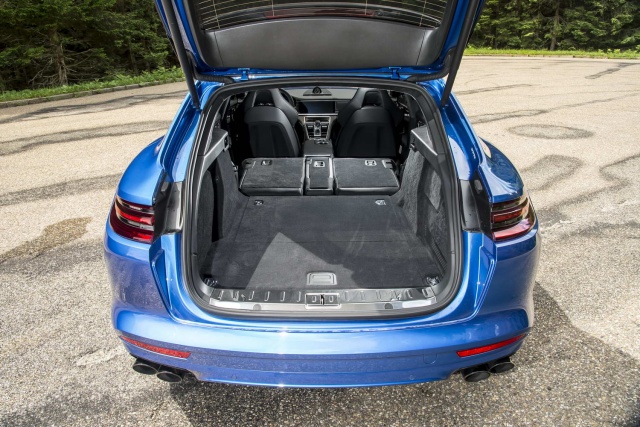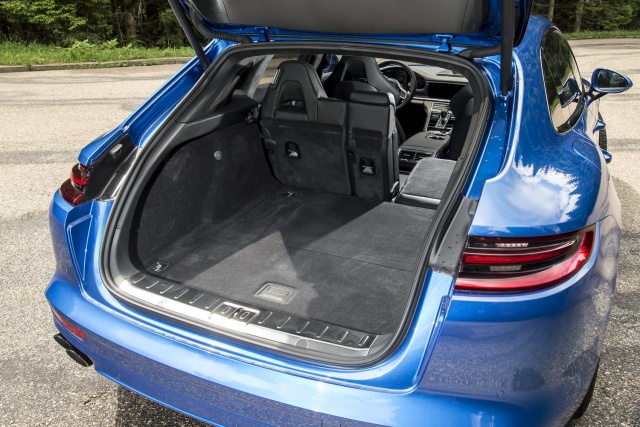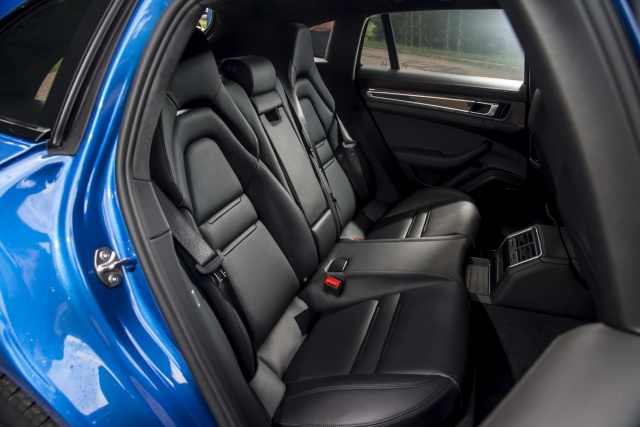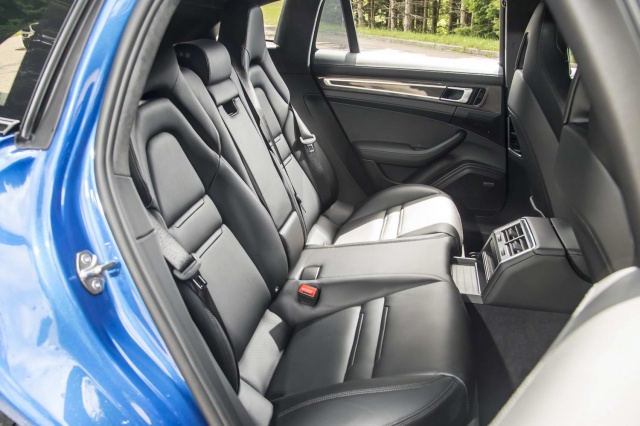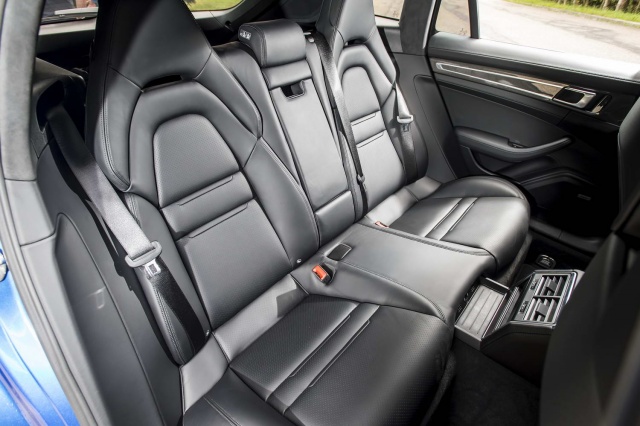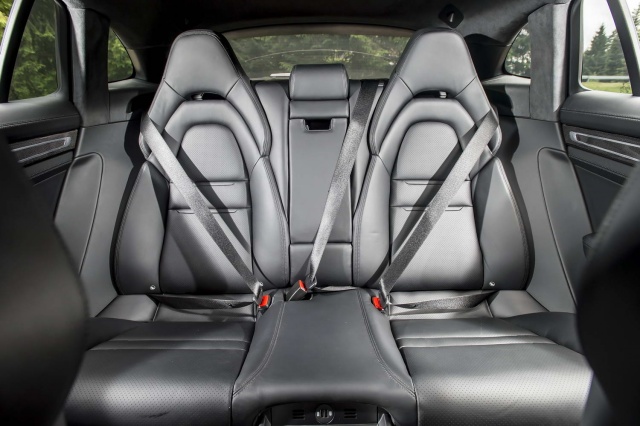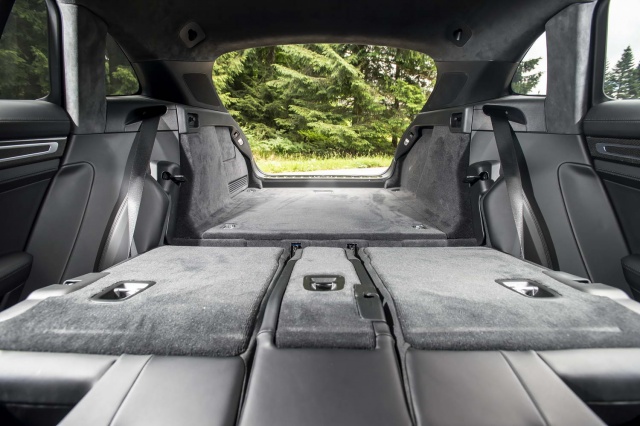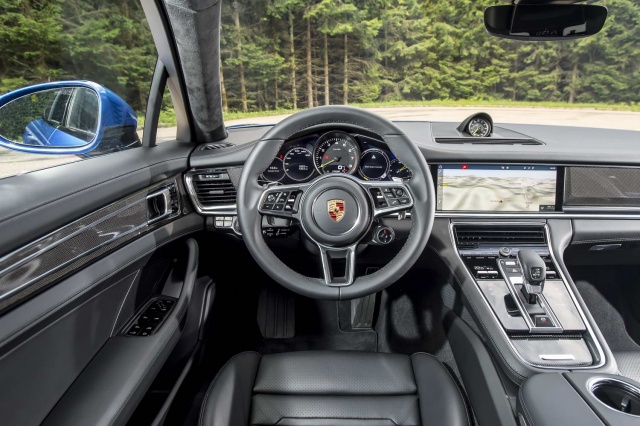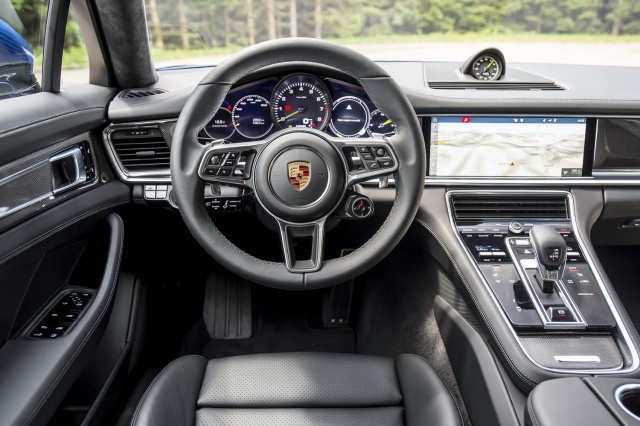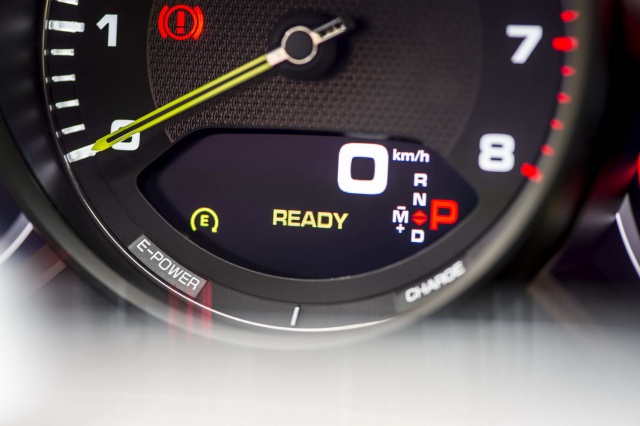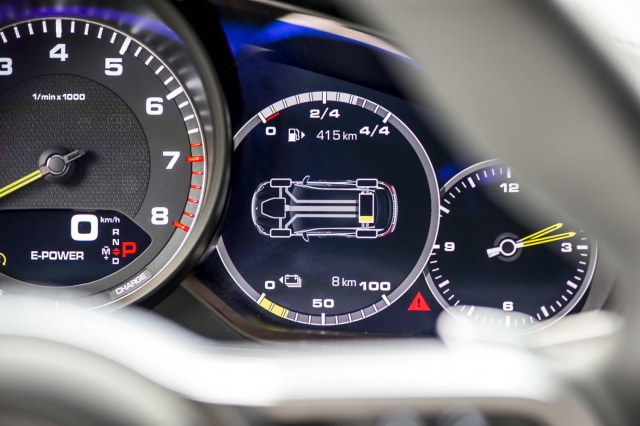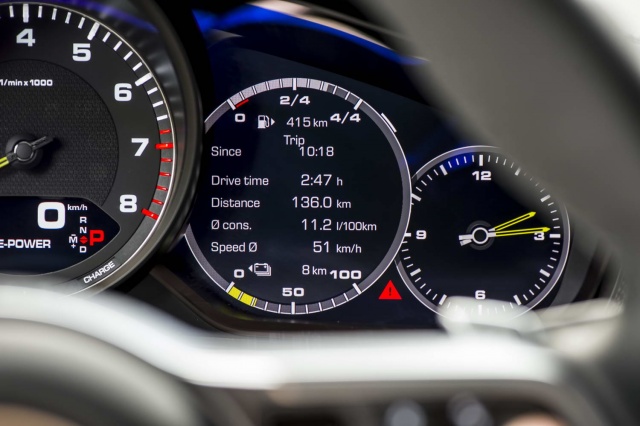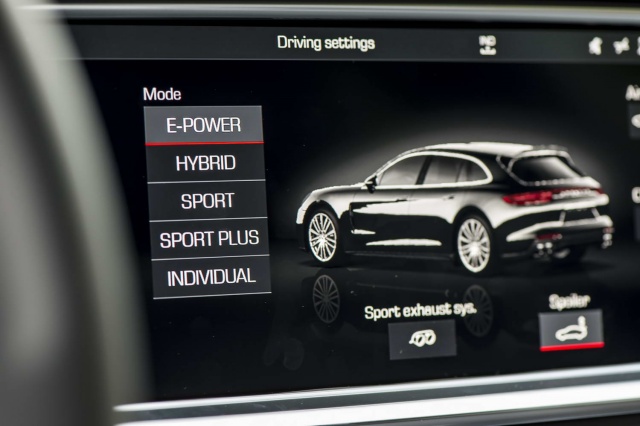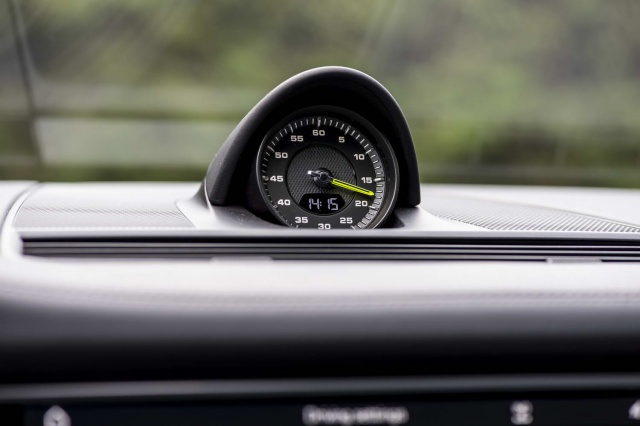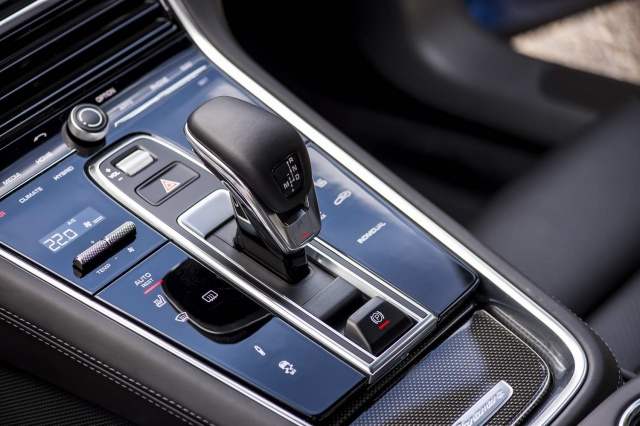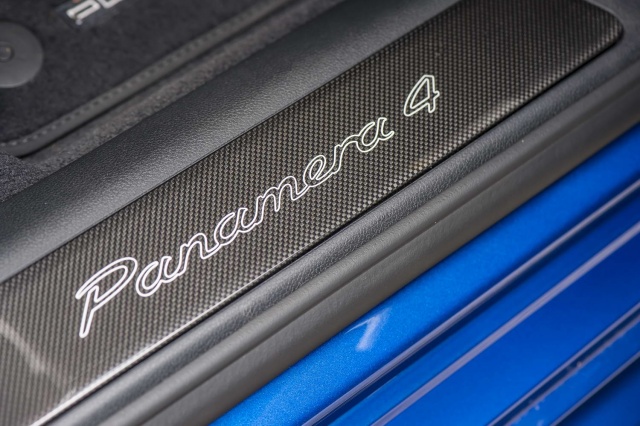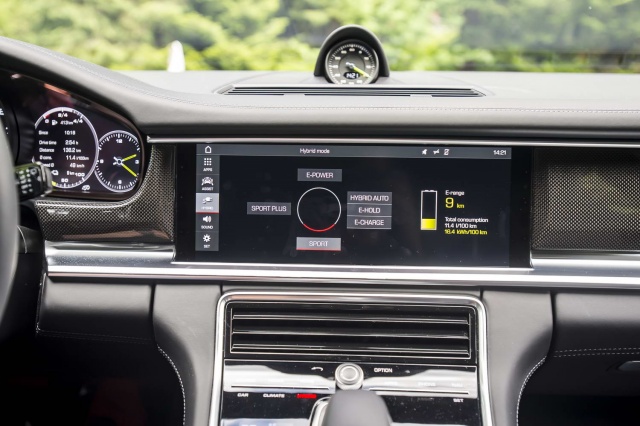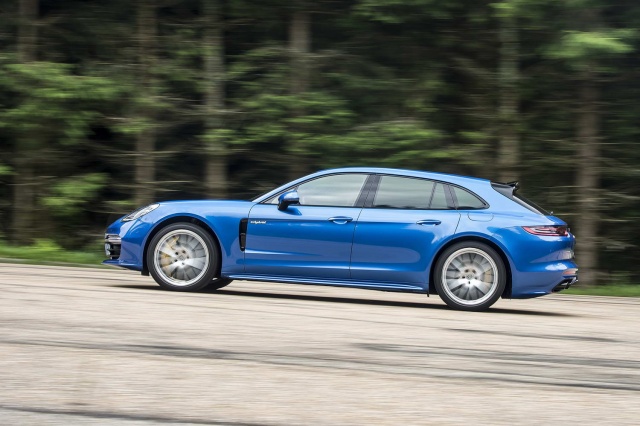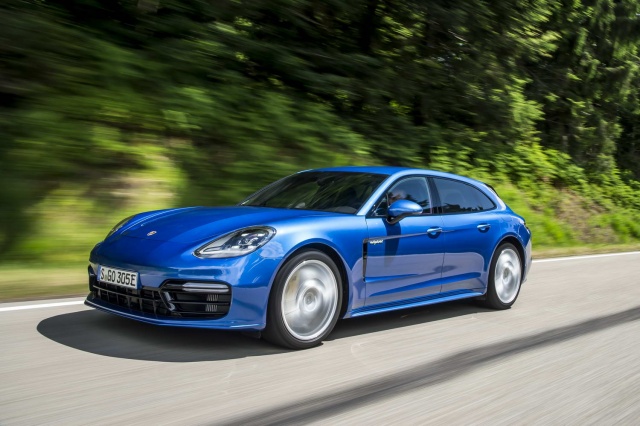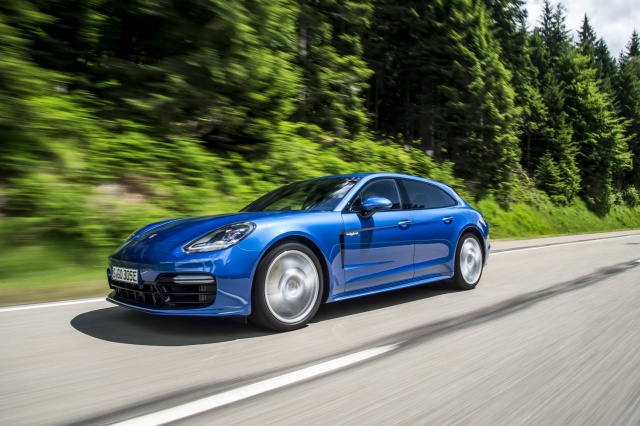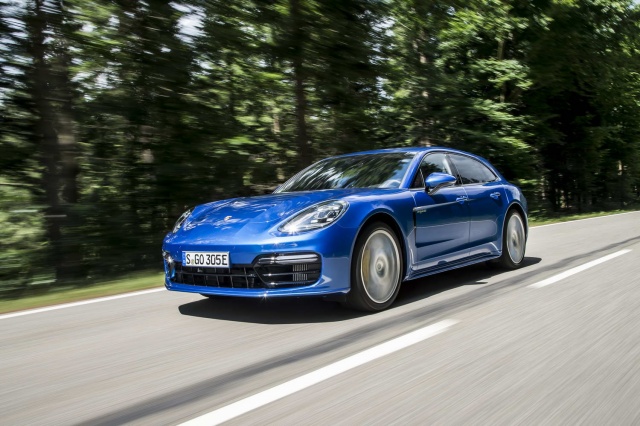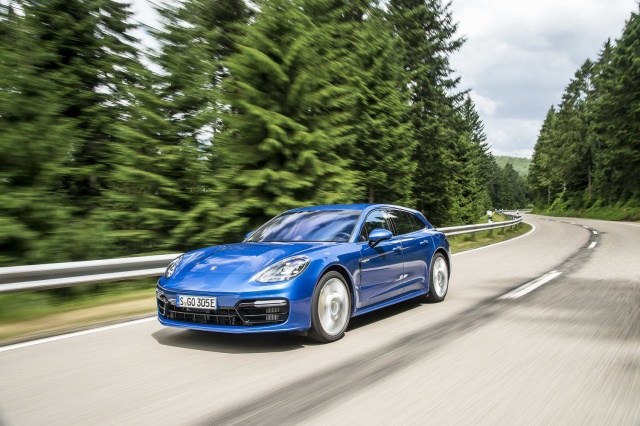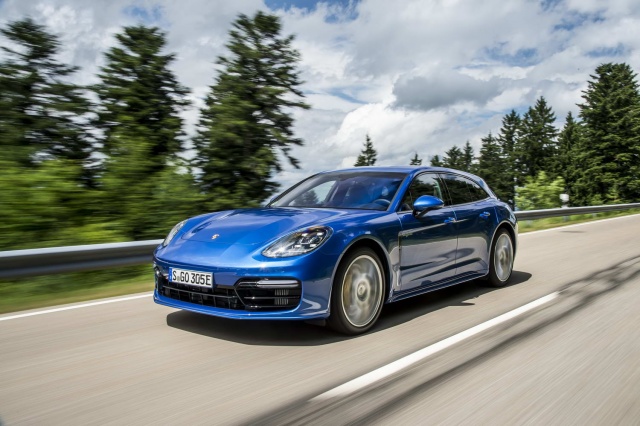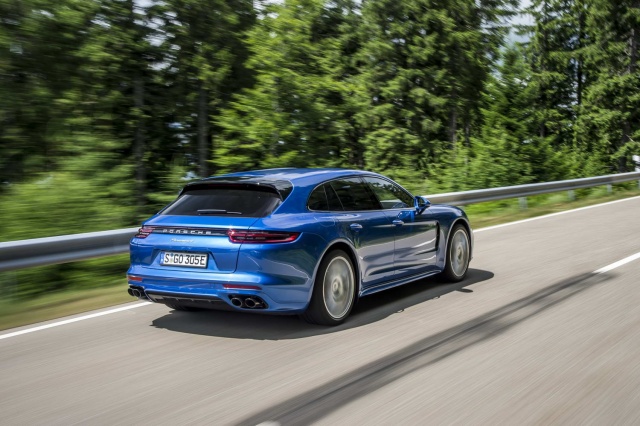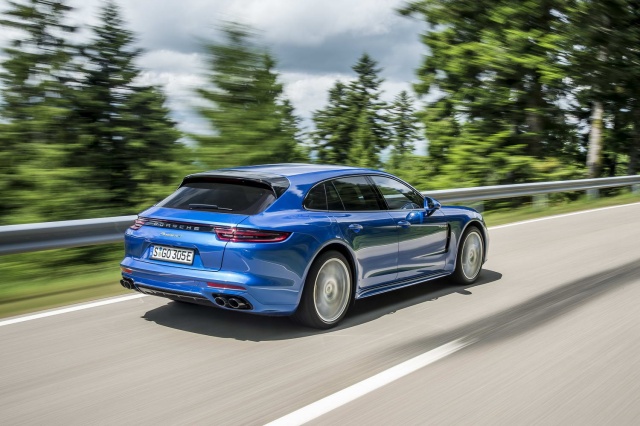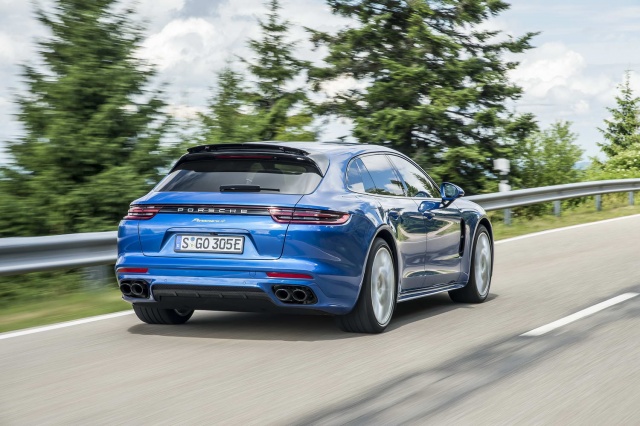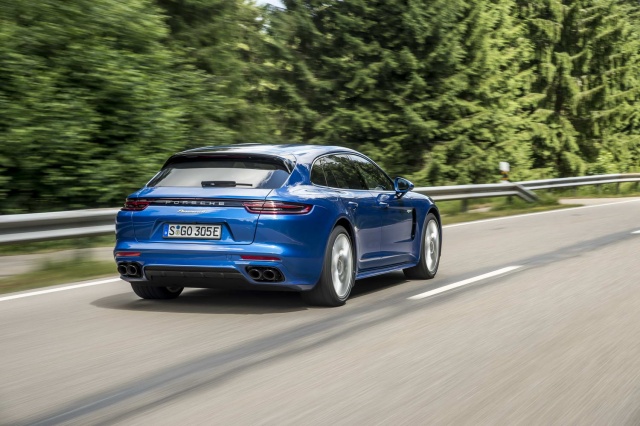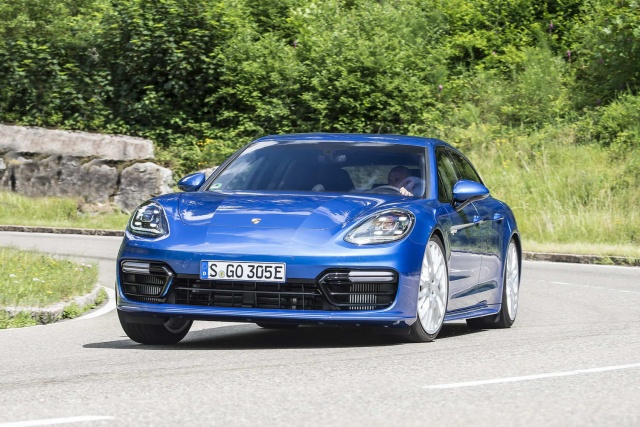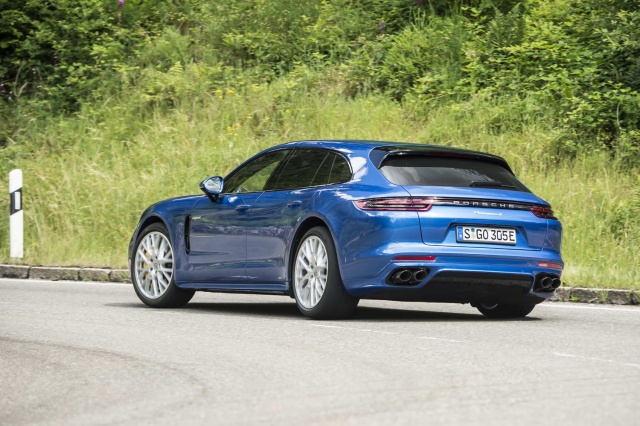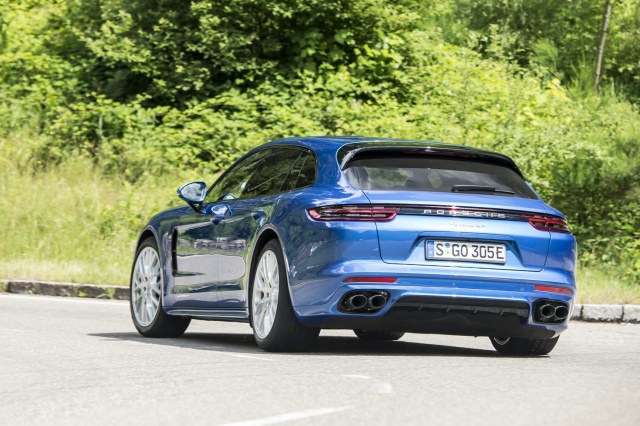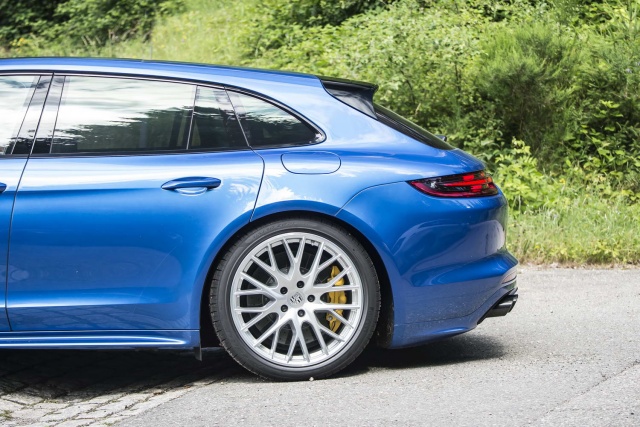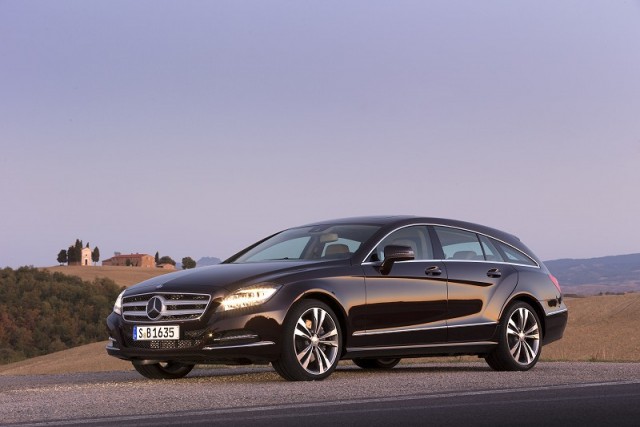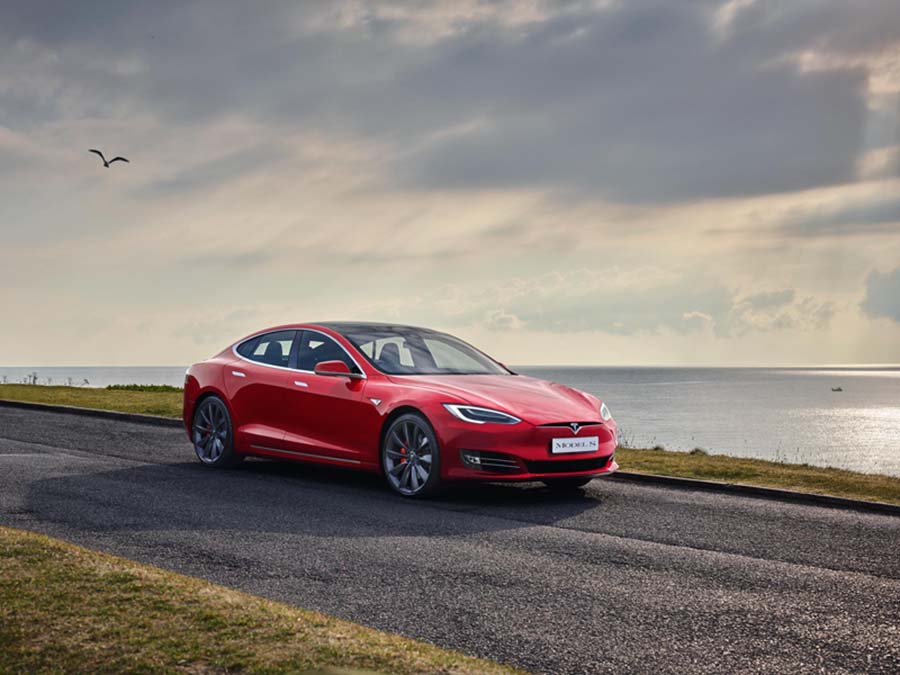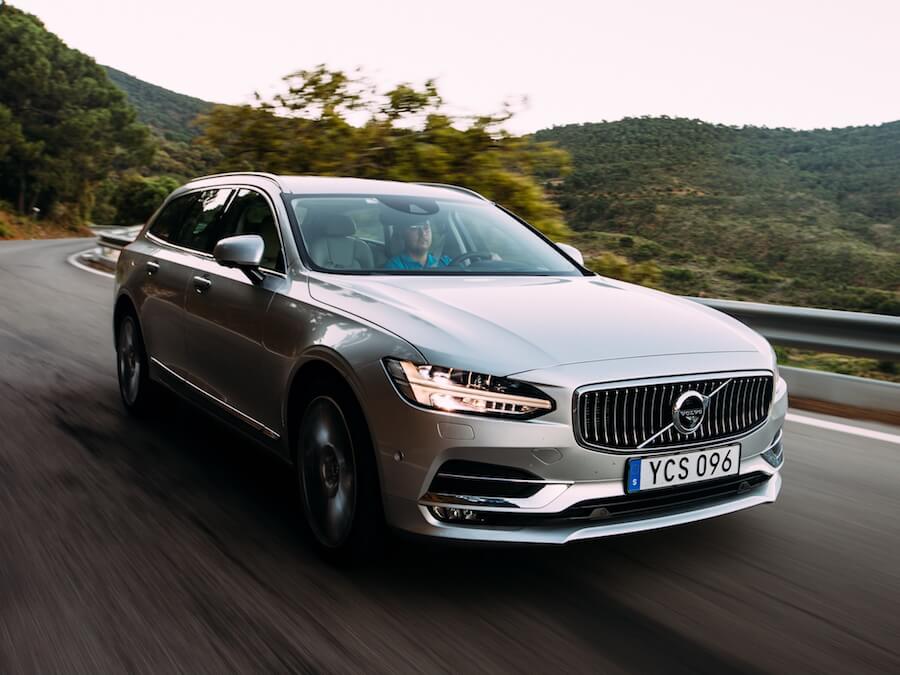It has taken Porsche five years to get round to building its Panamera Sport Turismo. A touch more space and a '+1' seat brings some more usefulness, but it's arguably its style that is its most appealing facet.
In the metal
It's here. Finally. The Panamera Sport Turismo concept debuted not just the styling of the second-generation Panamera, but also the fact that Porsche was intent on making an estate variant of it. That was back in 2012, at the Paris Motor Show, so the production version has been a long time coming. Worth the wait, arguably, as Porsche's current Panamera is one that's more comfortable in its skin, and the Sport Turismo builds on that. It's more of a 'shooting brake' than a genuine estate, though; if you're looking for real load-lugging ability you'll be better served by something like a Mercedes-Benz E-Class Estate, or, indeed, Porsche's own Cayenne SUV.
That's especially the case in 4 E-Hybrid form, as it sacrifices some of its gained boot space in the name of economy: the 520-litre seats-up capacity of conventionally powered Panameras drops to 425 litres in the hybrid (1,295 litres with the seats down, compared to 1,390 litres). Bung the charging cable bag in the back and you'll lose even more room, but that's unlikely to bother buyers.
The promise of a touch more practicality is brought too by the addition of a third seat in the rear - a first for the Panamera. Even Porsche optimistically refers to the Sport Turismo as a '4+1', as a seatbelt in the middle is the only concession to a third passenger, who still has to sit on a hump between the two outer seats proper. It's purely for occasional use, then; the Panamera Sport Turismo is still best thought of as a comfortable four-seater rather than a cruel accommodator of five.
Nonetheless, the extended roofline and new D-pillar profile do make for an airier cabin back there. It's easier to get in and out of, too, and now the roof doesn't taper away at the rear there's the impression of more headroom. The seats fold in a 40/20/40 split and there's the option of a load retention system for the boot floor: the area is flat when those pews are folded down. Access to the luggage compartment is aided by a deeper tailgate, its hatch cutting below the number plate (it opens above it in the regular Panamera).
Not vastly more practical then, but the Sport Turismo's appeal arguably lies more in its style than any real gain in usefulness. The longer roof suits it, accentuating the broad hips, though it looks its best with the standard contrasting lower bodywork rather than optional body-coloured SportDesign pictured here. With that, it looks a bit heavy around the flanks and rear. One option worth having is one of the larger wheel choices, as the Panamera looks a bit odd on standard 19s; it's improved by the optional 20-inch wheels and better still on the 21-inch items shown here.
The cabin, digital representations of the Sport Turismo on the various screens aside, is identical to its sports 'saloon' relation's. That means a huge central touchscreen, supplemented by additional haptic touch controls on the transmission tunnel and drive controls on the steering wheel. It's all beautifully finished, with plenty of personalisation choices to make via the standard or Porsche Exclusive options.
Driving it
There might be a little bit more space, but you're not penalised for it in the Sport Turismo. We'll admit that the hybrid is our least favourite of the Panamera's powertrains, however compelling the costs might be.
Our first experience of the combined output of the 2.9-litre twin-turbo V6 and electric motor wasn't entirely satisfactory, though it's evident here that Porsche has been busy finessing it since it was launched. Combined, the 4 E-Hybrid's output is a useful 462hp, underpinned by a sizeable 700Nm torque figure. It drives all the wheels via Porsche's eight-speed PDK automatic transmission. All that power and traction is enough to have the 4 E-Hybrid reach 100km/h in 4.6 seconds, aided by launch control that's part of the hybrid's standard equipment.
The top speed is 275km/h, which is marginally down on the regular Panamera, but economy and emissions remain the same. On paper, along with a 56g/km CO2 rating, there's the promise of 2.5 litres/100km fuel consumption, even if the reality is likely to be a lot more for most drivers. The drivetrain automatically pushes to electric only propulsion whenever possible to help achieve that, and the transition from E-Power to Auto Hybrid mode is smoother now. Indeed, the entire drivetrain now offers a cohesiveness that wasn't always apparent during our first experiences of it.
The odd push-back from the accelerator isn't so apparent, either, and nor is the worrisome lack of initial response from the brake pedal as the system manages retardation and energy reclamation. It feels more natural to drive in the Sport Turismo. Not that the new rear profile has any bearing on the drive itself, as the Sport Turismo feels no different to the regular Panamera on the road. That means a fine ride thanks to air suspension, and agility that belies its size and weight.
Up to a point on that last element, as the 4 E-Hybrid is hauling around a lot of weight and dynamically it runs out of ideas quicker than a conventionally powered Panamera does. That's still at a point above where most buyers will conceivably drive it, and the 4 E-Hybrid's powertrain brings other advantages, like a potential electric-only range of up to 50 kilometres.
Managing the drivetrain does require some patience; the Mode Switch on the steering wheel offers options specific to the hybrid, though so extensive are the various settings they're also selectable via the touch screen. There's a bit of frustrating sub menu navigation to get to E-Charge and E-Hold, should you want to use the engine's power to charge the battery on the road, though doing so results in pretty punishing fuel consumption.
E-Mode delivers speed up to and beyond any Irish speed limits, meaning it's a potential electric-only driver that's not bound by city limits. Cleverly, even if entirely depleted, the system will retain some battery power to allow it its maximum performance while running in hybrid mode. In reality, run the battery down to that point and the V6 does feel like it's labouring a bit, but that's an unusual scenario in reality, as the 4 E-Hybrid for the most part juggles its seemingly conflicting goals with some finesse. That said, it's not the Panamera powertrain we'd pick from a pure driving perspective, but as a signal of a push to electric mobility it feels like a convincing step in the right direction.
What you get for your money
When you consider the complexity of the hybrid powertrain and the performance (potential and environmental) it brings then the 4 E-Hybrid doesn't look too outrageous compared to its Panamera relations. Indeed, it's significantly cheaper than the 4 S Diesel. The Sport Turismo rear adds to the Panamera's appeal, too.
Summary
It's been a long time coming, but the Porsche Panamera Sport Turismo brings some added style, if not much more practicality, to the line-up. We'd have one on looks alone, though with a different drivetrain to the hybrid for the proper Panamera driving experience.

